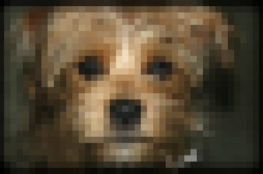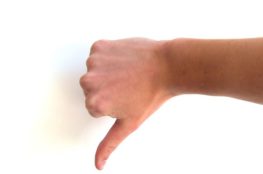Most people use stock photography, such as the stuff that comes with MS Office, and while there are some good images in those collections, sometimes you just need to shoot your own photos. And with digital cameras being so cheap these days, you can get a custom shot without too much trouble.
First advice: get a beginner’s guide to photography and read it — or at least glance through it. A little information will go a long way to improving the photos you take. And knowing how to manage composition, lighting, depth of field, use of color and other photographic techniques will help make your family picnic snapshots better, too.
But when you’re shooting Web photos, some extra considerations might apply. Here’s a rundown:
- Find out if the final photos will be portrait (tall) or landscape (wide). Many Web designs use landscape orientation (think about it — the monitor itself is wider than it is tall), so if in doubt, choose landscape. Or shoot both orientations, and then you’re covered.
- Simplify the photo. Web photos are usually pretty small, so a huge crowd of people becomes a collection of dots. Better to have a simple shot, with a single focal point filling much of the space and large enough to see details.
- Don’t compose the shot too tightly. You’re probably going to crop the photo anyway, but having extra room around your subject allows you to experiment with different crops, fades or other design effects.
- Use people. Web pages are inherently distancing. If I stopped into your store, I’d see your company’s personality facing me across the desk — but on the Web, It’s just me in my pajamas staring at a computer screen, and probably a boxy one at that. On the Web, you need to work harder to present the human component. Smiling happy faces remind your Web visitors that there are real people behind all that HTML.
- Face the subject into the page. If you know that the photo will be used on the left side of the screen, for example, shoot your subject’s right side so that she ends up looking into your page (rather than off-screen). Even inanimate objects can be photographed so that they aim inwards.
- Strong photos can be distracting. All design elements need to support the Web site’s main goal (say, to learn about the company or buy a widget). Really dramatic photos can pull attention away from the selling points. Be especially careful with subjects looking right into the camera. On their own, a photo like this can be powerful, but if they overpower the page, your visitors might miss the other, more important stuff.
- Think about colors. Your Web site probably has a color scheme. Include at least one of those colors in the photo, and the shot will blend into the page.
- Keep high-resolution source photos. You’re going to crop and resize the photo before it goes on the Web page, and you may add effects as well. Make these changes to a copy of the original, so that you can go back to the high-res version if you ever redesign the site or want to use the photo in printed materials.


